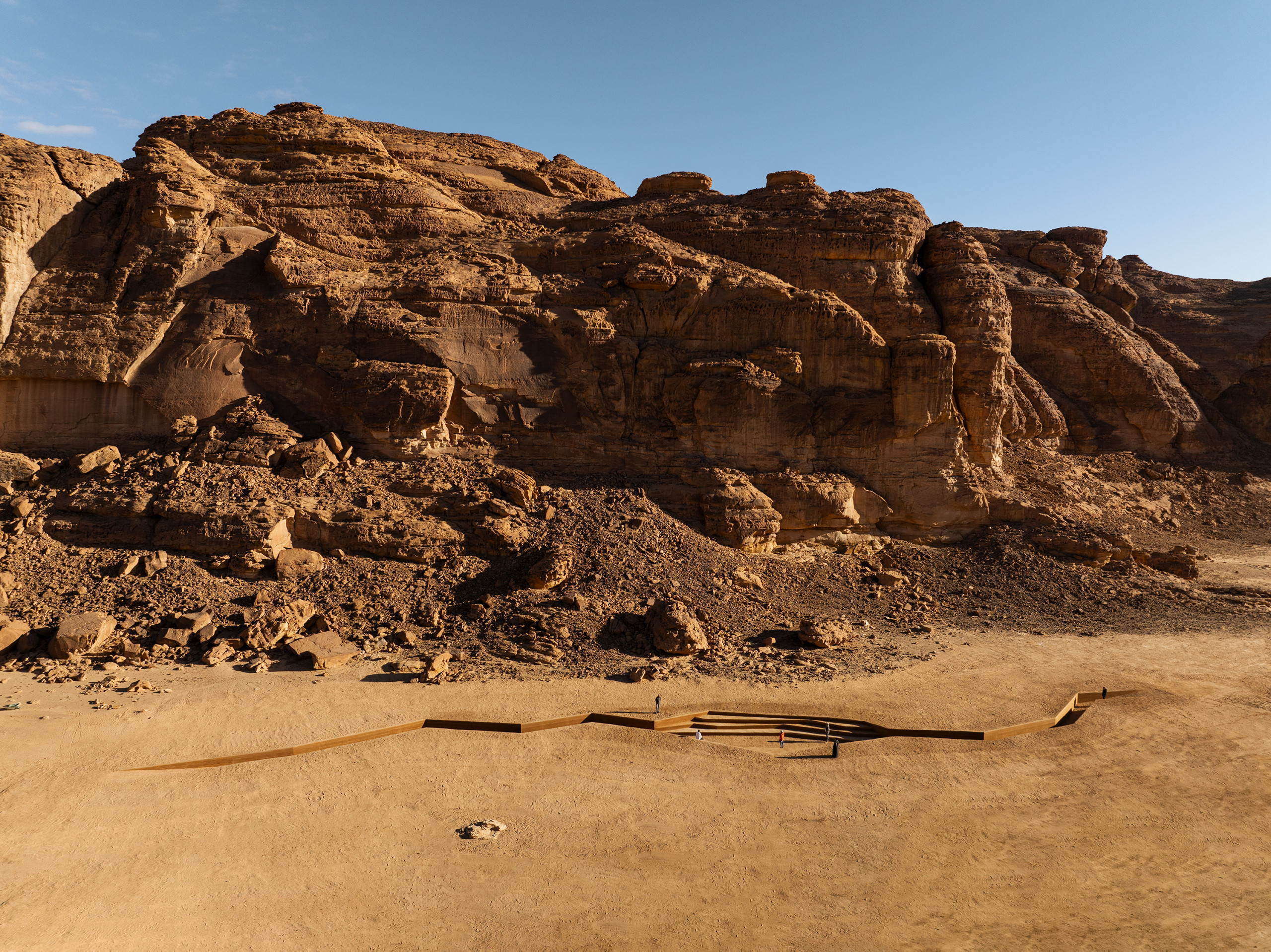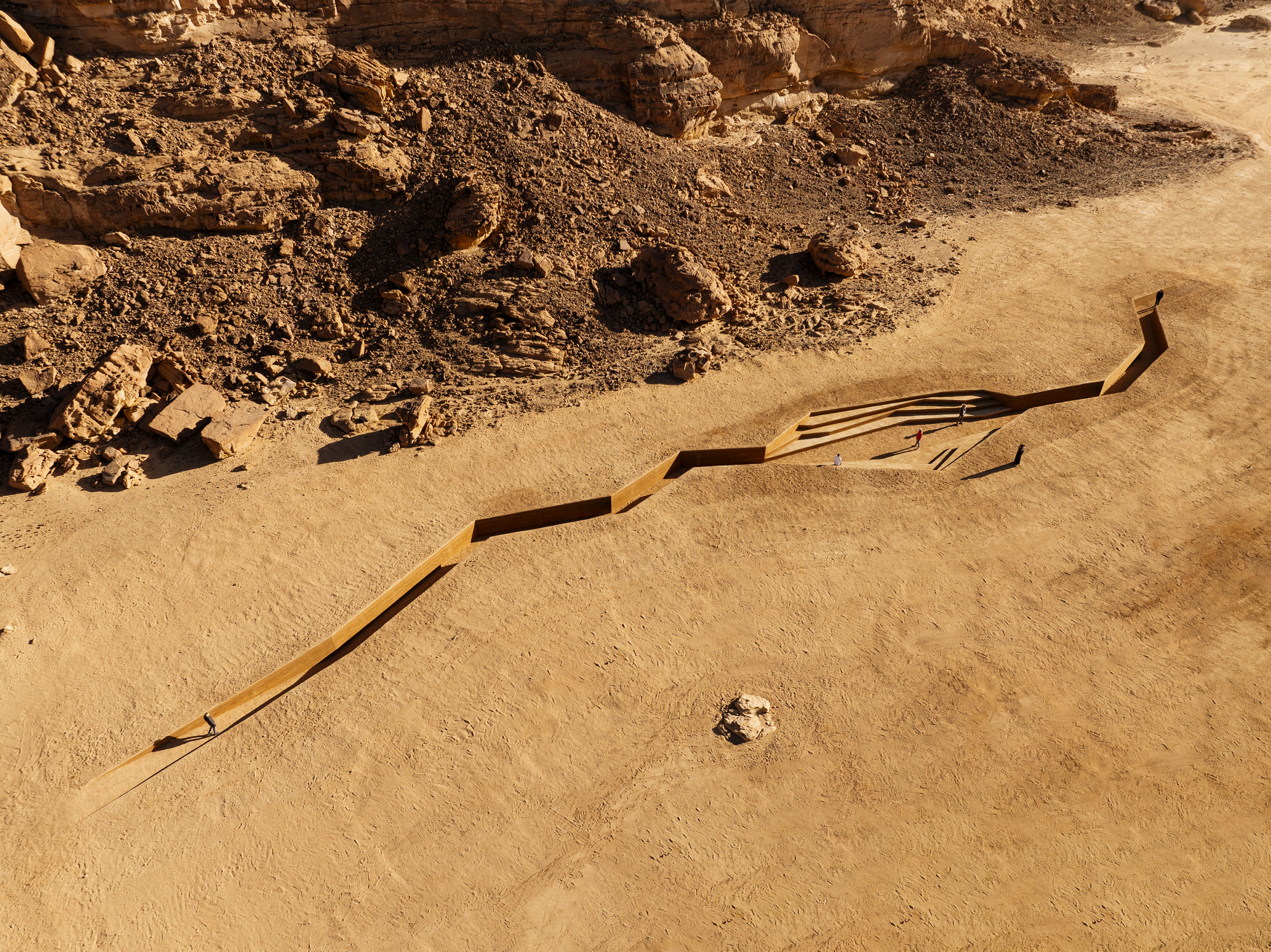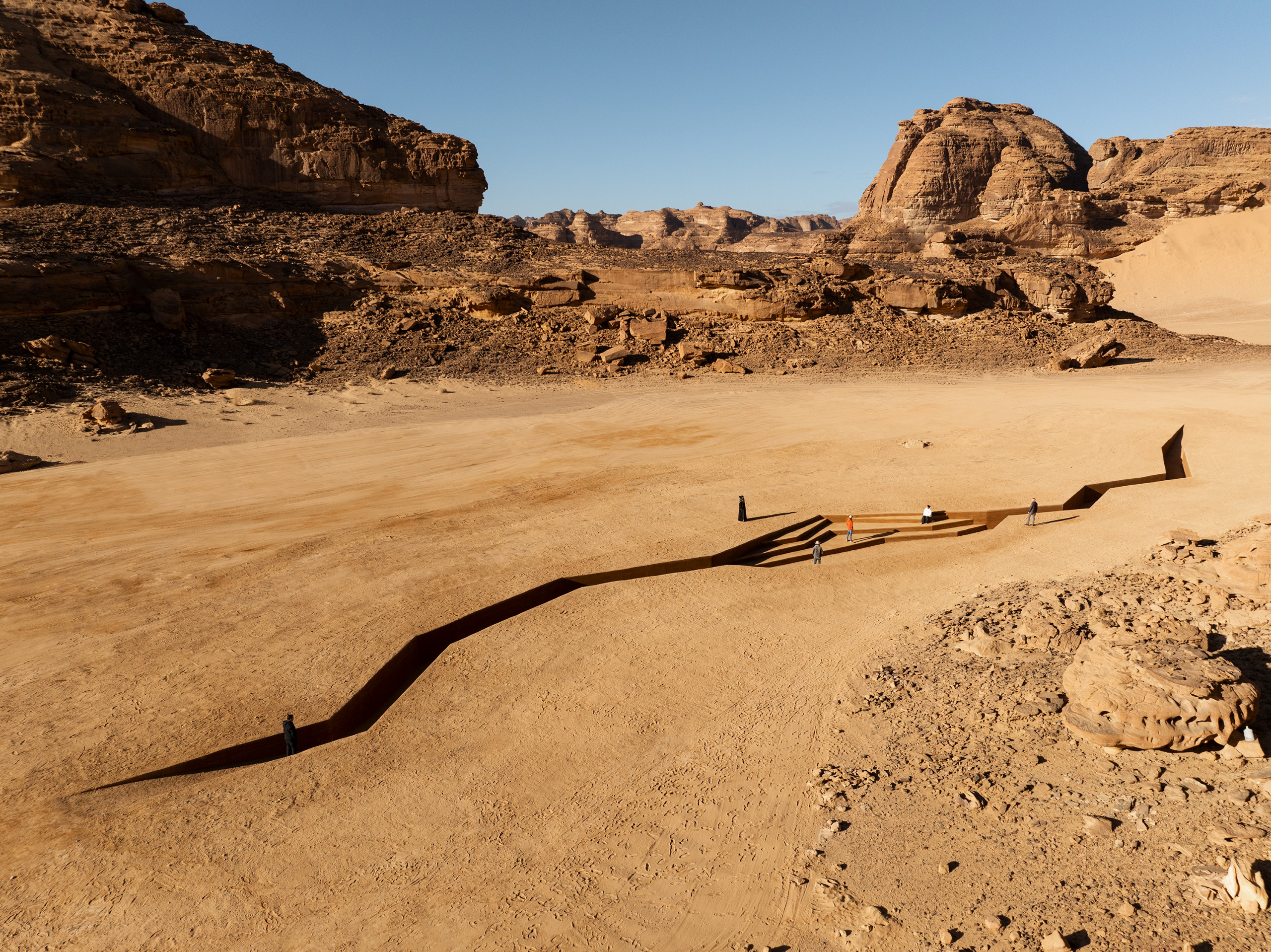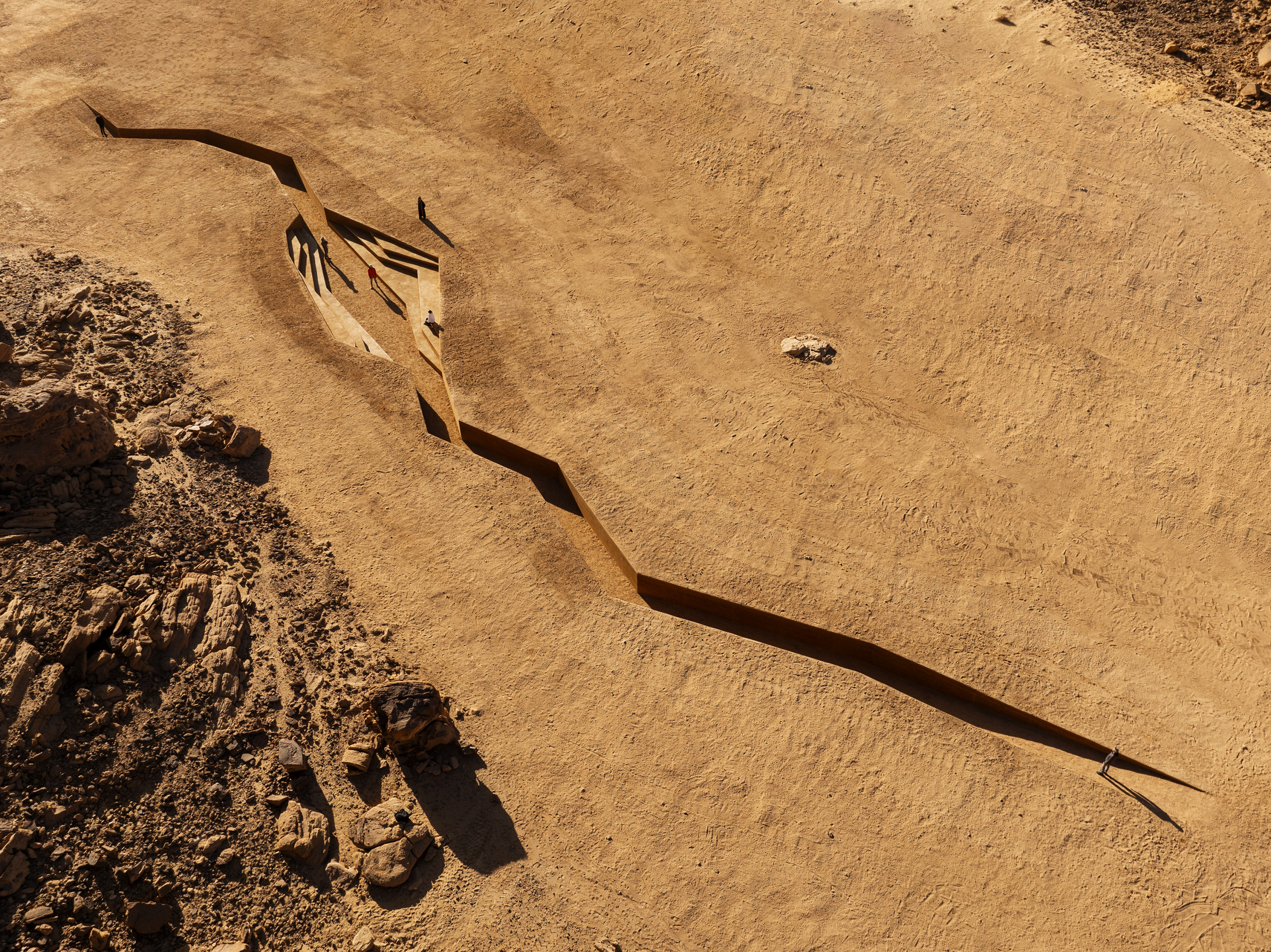Sara Alissa & Nojoud Alsudairi
Invisible Possibilities: When the Earth Began to Look at Itself
For Alissa and Alsudairi, everything can be re-examined and reinterpreted, since the apparatus of the perceived environment cannot be entirely measured, anticipated, controlled, or known. For this site-specific installation, the two artists have begun to grasp “a temporal route that traces and constructs human and non-human interactions between elements in the surrounding nature.” Invisible Possibilities: When the Earth Began to Look at Itself aims to encourage speculation as a means to explore and further reshape viewers’ understanding of the site’s ecological transition and its physical geographies.
To establish this connection, Alissa and Alsudairi looked freely into the sub-level materiality, found forms, and let them perform as architecture. The work emerges from the dictations of the site itself and the engagement of the viewer: the emphasis is shifted from the qualities of the work to the aesthetic values of the exchanges involved in the investigation of the site itself. Thus, “blurring lines between object and subject.” To further establish an understanding of subjectivity in relation to positionality, Alissa and Alsudairi reference Rosi Braidotti’s notion of the “nomadic subject.” In her writings, the nomad describes an epistemological condition, a kind of knowingness – or unknowingness – that refuses fixity, that allows us to think between or “as if,” to articulate another reality. These traces inform the artists’ pathway to the proposed work and prompt the discovery process of the larger site, playing an important role in creating new kinds of relationships between subject and object.
Based on a more poetic criteria of time, memory, materiality, and occupation, the artists believe that this form of intervention raises and intensifies our awareness of the surrounding ecology, and creates a place of meaning and contemplation out of a careful reframing of the familiar.



